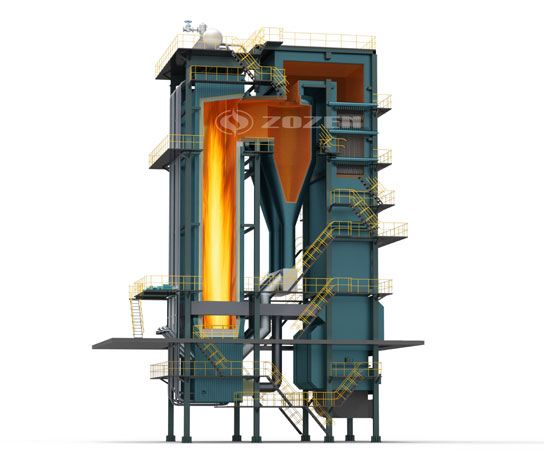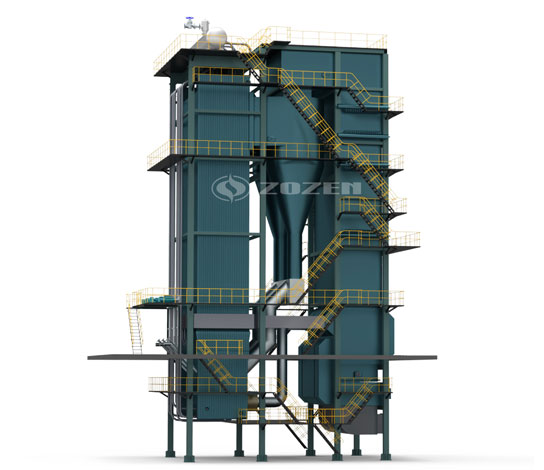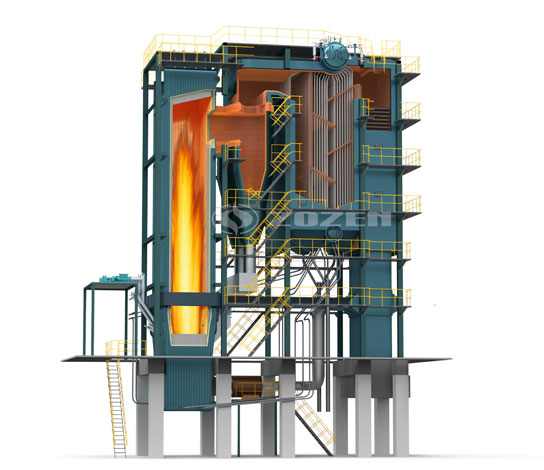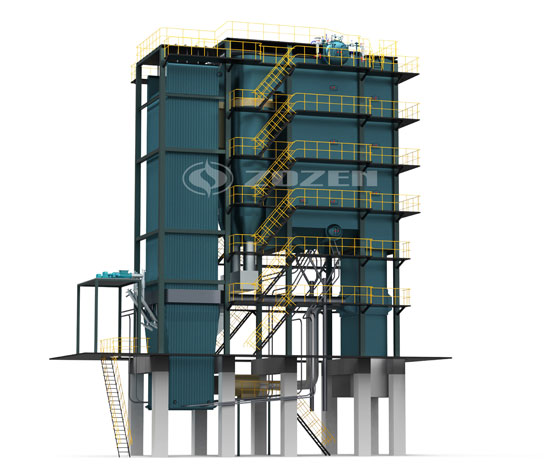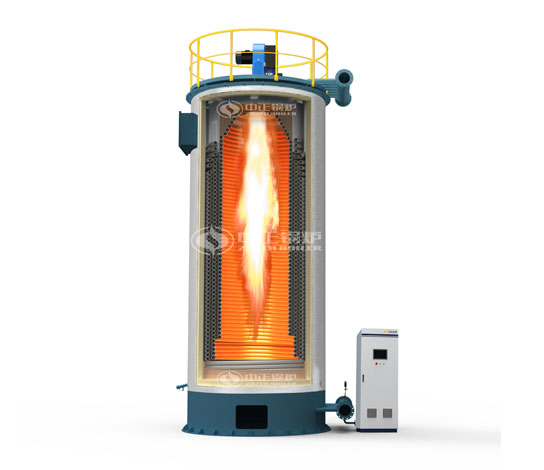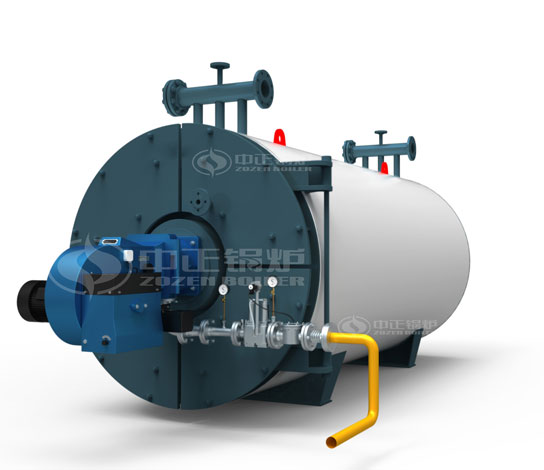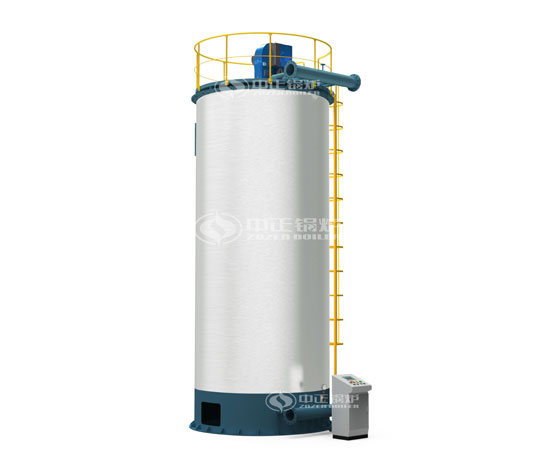1. molten salt heat carrier heating system
Molten salt heat carrier heating system mainly consists of heat carrier heating furnace, molten salt circulating pump and molten tank. Powdery mixed inorganic salts are put into the melting tank and heated to above the melting point by installing high-pressure steam heating tubes in the tank. When the viscosity reaches a reasonable value, the powdered inorganic salts are injected into the heating furnace through the molten salt circulating pump in the melting state. After further heating, the powdered inorganic salts are transported to the heating equipment at the set outlet temperature and returned to the melting tank after heating. When the operation stops, all the molten salt reflux is stored in the melting tank.
2. Characteristic of molten salt heat carrier
At present, the commonly used molten salt is a ternary eutectic mixture: 53% KNO3, 40% NaNO2, 7% NaNO3. The main performances are non-combustion, non-explosion, non-toxic leakage of steam. Its main physical properties are as follows:
Melting point: Q = 142 C;
Density: P = 2000 kg / m3 at 150 C, P = 1650 kg / m3 at 600 C, which decreases linearly in this temperature range.
Kinematic viscosity: v = lOx10-6m2/s (150 C), decreases exponentially with the increase of temperature, and approaches a stable value (about 0.8x10-6m2/s) at 400-550 C.
Specific heat fusion: C = 1.55 kj/kg.k
Thermal conductivity: 0.3W/m.K (500 C);
Expansion coefficient: solid salt = 0.00159 volume%/k.
Molten salt = 0.01 12 volume%/K;
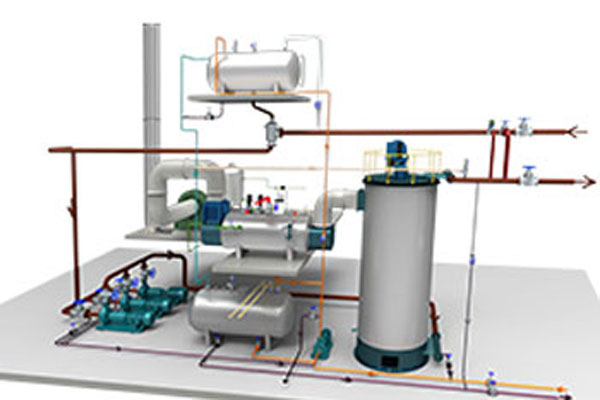
3. Several problems that should be paid special attention to in practical application
(1) In the design of molten salt boilers, the heat loads of each heating surface and corresponding combustion equipment can be selected with reference to steam boilers. When the flow resistance is allowed, the velocity of medium flow in the heated surface tube is generally not more than 3m/s.
(2) In the design of molten salt boilers, it should also be considered that molten salt has higher viscosity and larger flow resistance than water or heat conducting oil at high temperature. Therefore, the design pressure should be slightly higher than the working pressure, generally controlled within 1.2 times. The design pressure is set as the maximum lift of the circulating pump.
(3) The material selection of heating surface and system pipes is not very different from that of boiler materials, which mainly depends on the medium temperature. However, all parts in contact with molten salt should be free of copper, aluminum and alloy components.
(4) As the heating surface tubes of salt-soluble boilers are generally made of Cr-Mo steel with high notch sensitivity, it is necessary to adopt preheating before welding, interlayer insulation and post-weld heat treatment to prevent welding cracks and reduce the residual stress level at welded joints.
(5) The three components of molten salt are all strong oxidants, which are easy to decompose and release oxygen and heat. It is not flammable in itself, but can cause combustion of combustibles. It is sensitive to friction and thermal shock; it can form explosive mixtures with soft flammable powder, and decompose into flammable substances, organic substances and reducing agents, which can cause combustion and explosion. Owing to the oxidation degradation of molten salt in contact with air, the system must be sealed and inert gas must be filled in the melting tank.
(6) Special attention should be paid to safety issues when starting and stopping the system. After the system stops running, it is necessary to ensure that all molten salts in the system are put back into the storage tank, especially that there is no residual in the heating surface, and the system is slowly cooled to prevent stress damage. When the molten salt furnace starts up, it needs to preheat the heating surface pipe and the empty pipe of the system pipe. It is particularly important to master the temperature of the pipe wall. Generally, the temperature of the pipe wall should reach 180 ~ C. If the molten salt deteriorates, the temperature should be increased appropriately. Special attention should be paid to the prevention of secondary combustion in the drying pipe of oil-fired furnace, because the furnace temperature is low when drying pipe with flue gas and oil accumulation is easy. If the fuel is heavy oil, not only should special attention be paid to this problem in operation, but also this aspect should be considered first in boiler structure design.
(7) Periodic determination and treatment of molten salt deterioration. The molten salt will deteriorate after use, especially the nitrite. The deterioration of heat carrier is mainly manifested in the decomposition and oxidation of compounds, which reduces the content of nitrite and increases the melting point of compounds. Physical and chemical data will also change after degradation, which has many effects on heating and operation.
The deterioration degree of nitrite heat carriers can be determined by periodic analysis of nitrite concentration, determination of melting point, carbonate content and water content. With the aggravation of deterioration, the melting point of the mixture rises, but the melting point can be reduced by adding nitrite, so that the heat carrier can be regenerated. Generally, when the melting point rises 150 C, it must be supplemented. If the heating capacity margin of molten salt heating system is insufficient, it should be supplemented in advance. In addition, if molten salt contacts with air, it will oxidize and produce a large amount of carbonate, and precipitate in the system, which will easily lead to blockage. At this time, all heat carriers must be replaced.






